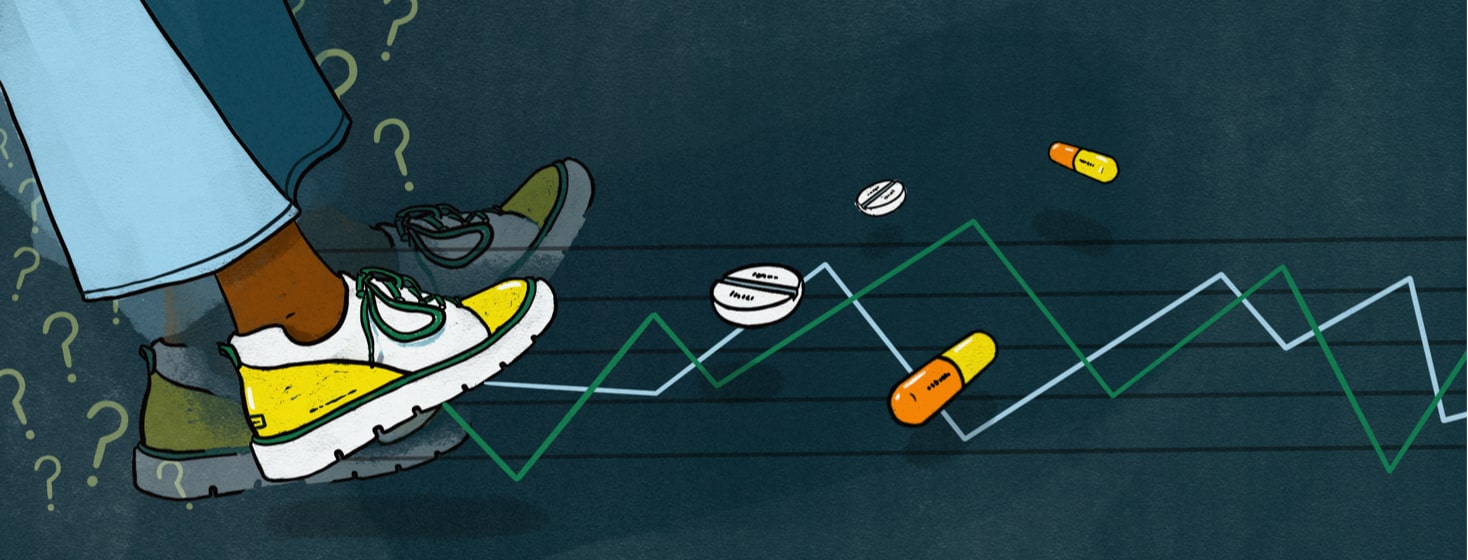Going Back on Tramadol (Part 2): A New Dose
This article is a continuation of a previous article, "Going Back on Tramadol." Click here to read the previous installment!
I finally had my neurologist appointment. One I’d been waiting for for 6 months. And it didn’t go well at all for my mobility issues that have cropped up, but it was very promising for my migraine disease and restless legs syndrome. So you have to take the wins where you can get them.
Informing my neurologist about going back on tramadol
I told my neurologist I had ended up taking more of my prescription medication most days when it came to my RLS, and also that there were days when my RLS symptoms happened during the day and in my hands and arms — and just so insanely severe. It’s been driving me batty.
Then I mentioned that my other doctor had put me on slow-release tramadol, and that had then reduced the amount of RLS medication I needed to take. I told him that when I was on the full dosage of tramadol, I had no RLS issues at all.
I am used to doctors being against opioid treatment
My neurologist asked about the low dosage of clonazepam I am on that helps suppress my vestibular disorder symptoms; it helps me manage them somewhat. He wanted to know if it helps with my RLS at all, but it definitely never has. However, I need to take it in the morning or my vestibular disorder symptoms get too severe to manage. I don't take it at night, which may be the reason that it hasn't helped my RLS.
Frankly, he astonished me by suggesting I go back on the full dosage of tramadol. I know that it is a treatment for RLS. It is just that I am quite used to doctors and specialists and society and random people being rather ardently against treatment with opioids, even when you have chronic pain. Even when that chronic pain is quite hard to deal with. Even when you have a difficult time sustaining work and will very likely not be able to continue working — and end up not working. Even then.
It is just not a socially acceptable thing, regardless of the necessity of it when it comes to pain treatment. So... pretty surprised by that one. But I was fine with that. Two birds, one stone. He gave me a month's worth of the medication to see if it would be effective.
Experimenting with the effectiveness of tramadol
Half the dosage wasn’t. It did reduce my need for the RLS medication, though.
I was certain the full dosage would be. It definitely is helping with pain. Well, as much as that sort of painkiller is capable of helping. But it isn’t doing much more than half the dosage did for my RLS, which is really quite disappointing — and confusing, because it was so darn effective before. I am wondering if this is because my nerve symptoms and paresthesia in my feet and legs have also been severe. And all those symptoms smooshed together doesn’t exactly make the RLS feel better. So, there could be a whole lot of crossed signals going on there.
Or it could be that because I was getting used to my RLS medication to the point of needing a lot more of it, my RLS symptoms are super aggravated right now. And I just have to wait until they simmer down again.
Or... it just simply doesn’t work like it did before. Simple as that.

Join the conversation